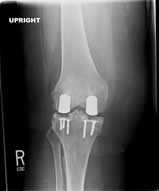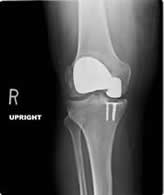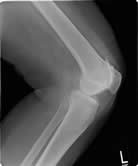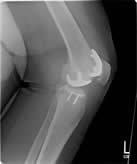Bi-compartmental Knee Replacement
The knee is made up of 3 compartments: medial, lateral, and anterior. Each can be replaced separately or in combination.
When doing a unicompartmental knee replacement only one of the compartments is resurfaced, and the remaining 2 compartments and the anterior and posterior cruciate ligaments are preserved.
When doing a bi-compartmental knee replacement, 2 of the damaged compartments are replaced. The normal remaining compartment and the anterior and posterior cruciate ligaments are preserved. The surgical technique that I utilize is an in-lay technique that is very bone conserving and allows for more surgical options for future revisions.
There are 3 types of bi-compartmental replacements:
1. medial and lateral
2. medial and patella-femoral
3. lateral and patella-femoral

(Replacements pictured above: Total knee, Medial & Lateral, Patella & Medial, Partial)
With time, all replacements will wear and revision may be necessary. A total knee is revised another primary total knee or to a revision total knee that requires more bone resection for the specialized implants. When revising a unicompartmental or bicompartmental knee replacement that that utilizes the bone conserving inlay technique that I use, more options are available for the revision.
From January 2011 to September 2012 I have performed 25 partial (unicompartmental) knee revisions. Of these 80% were revised to a unicompartmental or bicompartmental knee, and only 20% to a primary total knee, leaving more options for future revisions. This is important with patients living longer and having their original surgeries at younger ages such as their 40’s and 50”s.
As of July 30, 2012, of my last 100 knee replacements, 60% were partial knees of the medial or lateral compartment, 11% were bi-compartmental knee replacements replacing two of the three compartments of the knee, 7% were partial knee replacement of the patella-femoral joint, and only 22% were total knees. This would indicate that approximately 78% of the time when surgery is required for knee replacement, a full knee replacement can be avoided.
Here are examples of the various types of bi-compartmental knee replacments:
Medial & Lateral:


Model Pre-surgery Post-surgery
Medial & Patella


Model Pre-surgery Post-surgery
Lateral & Patella


Pre-surgery(side view) Post-surgery (side view)
Anatomy & Surgical Animations of Knee Replacement Surgery
Click on the link below to learn more about the knee or to view animations of knee surgeries.
Would You Like To Make An Appointment To See Dr. Kelly?
Click Here To Find Out How.
© 2009-2020 Dr. C. Michael Kelly, M.D. • Design by Chip Thompson
